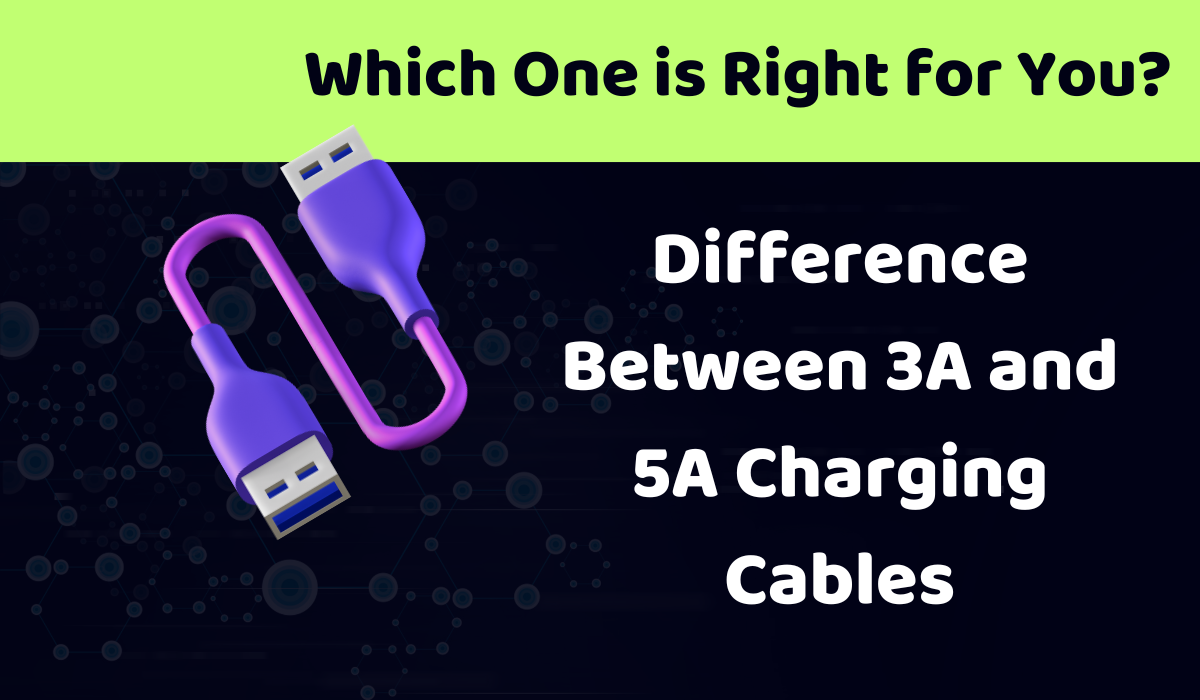Difference Between 3A and 5A Charging Cables
In today’s fast-paced world, our devices need quick and efficient charging. But while chargers have become faster—going from 5W to 240W output—finding the right charging cable for your needs can be tricky. Though charging cables often look similar, their performance can vary significantly. Today, let’s dive into the differences between 3A (60W) and 5A (100W) charging cables and help you make the best choice.
Types of Charging Cables
You might have seen various types of cables such as USB-C to USB-C, USB-A to USB-C, and USB-C to Lightning cables. Each type serves different devices, but the focus here is on USB-C to USB-C cables, specifically the differences in 3A and 5A versions. We’ll also briefly discuss USB-C to Lightning later on.
The Role of the E-Marker Chip
In the USB charging ecosystem, three main participants are involved: the source (charger), the sink (device), and the cable. To ensure that power is correctly delivered, these parts need to communicate. An E-Marker chip inside the cable helps with this “handshaking” process. Cables with a 5A E-Marker chip can handle up to 100W of power, while those without it are limited to 3A (60W).
Difference Between 3A and 5A Charging Cables
1. Power and Current Limitations
- 3A Cable: Supports up to 60W of power, making it suitable for phones, tablets, and devices like the Nintendo Switch.
- 5A Cable: Equipped with an E-Marker chip, this cable supports up to 100W of power, ideal for charging larger devices like laptops that require higher wattage.
2. Cable and Connector Quality
- 3A Cable: Generally lacks any noticeable marks and is often more affordable. This makes it a good choice for users with devices that don’t require high-power charging.
- 5A Cable: Marked with “5A” on the packaging or connectors, these cables are built to a higher standard with thicker plated gold connectors, wider pins, and durable materials like cotton thread to improve flexibility and durability.
3. Price
- 3A Cable: More affordable and widely available. It’s suitable for users with devices that don’t require more than 60W of power.
- 5A Cable: Typically more expensive due to its enhanced durability and higher power support, making it ideal for those who need reliable fast charging for high-power devices\
Common Questions
1. Can I use a 3A cable instead of a 5A cable?
- Yes, in most cases. However, if you try to charge a device with high power needs using a 3A cable, the current will be limited to 3A (about 60W). Some devices with strict power requirements, like certain laptops, might not charge at all without a 5A cable.
2. Why are 5A cables usually shorter?
- To support high current without losing power, 5A cables are typically 0.3-1 meters long. Longer cables have greater resistance, leading to voltage drops that reduce charging speed.
3. Is USB-C to Lightning limited in current?
- Yes. USB-C to Lightning cables, used for Apple devices, are limited to 3A and can charge up to around 33W, which is sufficient for iPhones and iPads.
4. Are charging power and data transfer speed related?
- No, charging power and data transfer speeds are not directly connected. You can have a 3A cable with high data speeds (e.g., 10Gbps) and a 5A cable with lower data speeds (e.g., 480Mbps).
Conclusion
Choosing between a 3A and a 5A cable comes down to your devices and budget. A 5A cable offers the best fast-charging experience and supports higher-powered devices. But if 60W is sufficient for your needs, a 3A cable is a reliable and affordable choice.
If this guide helped you, feel free to like, share, and subscribe for more helpful content on choosing the right tech tools!
